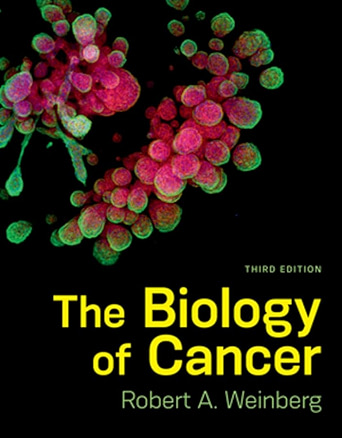To not miss a post like this, sign up for my newsletter to learn computational biology and bioinformatics.
Suna was 28. She had melanoma. Chemo left her wrecked—her hair gone, her strength gone, and her hope fading. Doctors gave her weeks.
Then they tried something different.
It didn’t poison the tumor. It didn’t cut or burn. It woke up her immune system.
Her own T-cells found the cancer. Attacked it. Killed it.
She survived.
That story isn’t rare anymore. And that’s the power of modern cancer therapy—an evolving arsenal that’s learning to outsmart, not just outgun, one of biology’s deadliest games.
From Brute Force to Targeted Strikes
The earliest cancer treatments were blunt. Chemotherapy still plays a crucial role—it’s simple, aggressive, and often lifesaving.
Chemotherapy works by attacking rapidly dividing cells. That includes cancer—but also hair follicles, blood cells, and the lining of your gut.
Common mechanisms include:
- DNA damage: Drugs that cross-link DNA strands, halting replication.
- Mitotic arrest: Agents that interfere with microtubules or block enzymes like topoisomerases, freezing cells mid-division.
The result: many cancer cells die. But so do many healthy ones.
The Rise of Precision
As we understood cancer better, we began to see patterns—specific proteins, enzymes, and signals that tumors rely on to grow.
Enter targeted therapy.
These treatments act like guided missiles, striking key cellular machinery:
- CDK4/6: Cell cycle drivers. Block them, and the cell stalls before it can divide.
- VEGF: Promotes blood vessel growth. Inhibiting it starves the tumor.
- Estrogen receptors (ER): In hormone-sensitive tumors, cutting the signal cuts the growth.
- HER2: A growth factor receptor often overexpressed in breast cancers.
- KRAS: Long thought “undruggable,” it’s now being indirectly targeted using clever chemistry.
- Cyclic peptides: Synthetic molecules that disrupt protein-protein interactions, wrapping around target surfaces like molecular zip ties.
These strategies offer precision, but precision has a flaw: mutations. Cancer evolves fast. When the target changes, the drug can miss.
The Immune System, Unleashed
Modern cancer therapy didn’t find a better poison. It found a better idea: use the body’s own defenses.
Immunotherapy works by helping the immune system do what it does best—recognize and destroy threats.
Checkpoint Inhibition
T-cells are powerful, but they’re held in check by built-in brakes like PD-1 and CTLA-4.
Tumors exploit these brakes to hide. Checkpoint inhibitors remove them.
When activated, T-cells release IFN-γ, a signal that:
- Increases MHC I on tumor cells, making them easier to spot
- Triggers CXCL9/10, chemokines that bring in immune reinforcements
The result? The immune system storms the tumor.
Cytokine Therapy
Cytokines are immune messengers. We can engineer them to target tumors more precisely.
- Type I interferons drive cancer cells into senescence—a non-dividing, zombie-like state—and activate dendritic cells that train T-cells to recognize threats.
- IL-2 fuels T-cell proliferation. It’s powerful, but dosing must be precise—too much can cause immune overdrive.
Oncolytic Viruses
Some therapies use modified viruses. These infect and burst tumor cells from the inside. They also trigger a cascade of immune responses, drawing the body’s attention to the danger.
Antibody-Based Therapies
Antibodies aren’t just immune defenders—they’re delivery systems:
- Some bind to surface markers like HER2, tagging tumors for destruction.
- Others carry toxic molecules inside cancer cells.
- Bispecific antibodies physically link T-cells and tumors, ensuring targeted killing.
CAR-T Cell Therapy
This is personalized warfare.
Scientists extract a patient’s own T-cells, reprogram them to detect tumor antigens (like CD19 or BCMA), and reinfuse them.
In blood cancers, it’s transformative. In solid tumors, challenges like the tumor microenvironment remain—but progress is rapid.
Resistance Is Real
Cancer mutates. It finds backdoors. It learns.
Some of its tricks:
- JAK/STAT mutations: disrupt immune signaling
- DNA repair upregulation: helps survive chemotherapy
- Glutathione enzymes: detoxify otherwise lethal compounds
To counter this, scientists are developing:
- Epigenetic modulators: reverse silencing of tumor suppressors
- Molecular glues: force toxic protein degradation by hijacking cellular trash systems
- Protein stabilizers: restore function to damaged genes like p53
Why Combination Matters
No single treatment is enough anymore.
Smart therapies now combine multiple mechanisms:
- Chemotherapy paired with immune checkpoint inhibitors exposes new antigens
- CDK4/6 inhibition can slow tumor growth and increase immune infiltration
- Oncolytic viruses plus cytokine therapy create a multi-layered immune response
The result is synergy: targeting cancer from all sides, blocking every known escape route.
Taming the Chaos
Cancer biology is messy.
So is raw data.
Just like a biostatistician tidies a dataset in R—reshaping tables, standardizing columns, long-to-wide—you need structure to find signal in the noise.
Understanding cancer requires tidy thinking. Every pathway, mutation, and immune interaction must be placed in context. Only then can we make rational decisions in an irrational landscape.
What We’ve Learned
Suna’s story used to be rare. Now it’s becoming common. Because we stopped looking for a silver bullet—and started building an arsenal.
Key concepts to remember:
- Checkpoint inhibition (PD-1, CTLA-4) removes immune brakes
- Cytokines like interferons and IL-2 fuel anti-tumor immunity
- Oncolytic viruses and CAR-T cells bring new ways to kill tumors
- Resistance arises fast—combination therapy is critical
- Clear biological insight depends on structure and tidy thinking
PS
The best book for cancer biology is “The Biology of Cancer” by Robert Weinberg.
